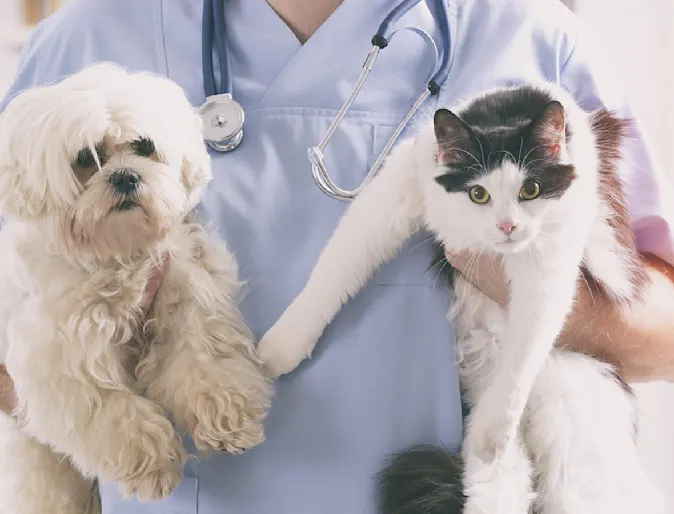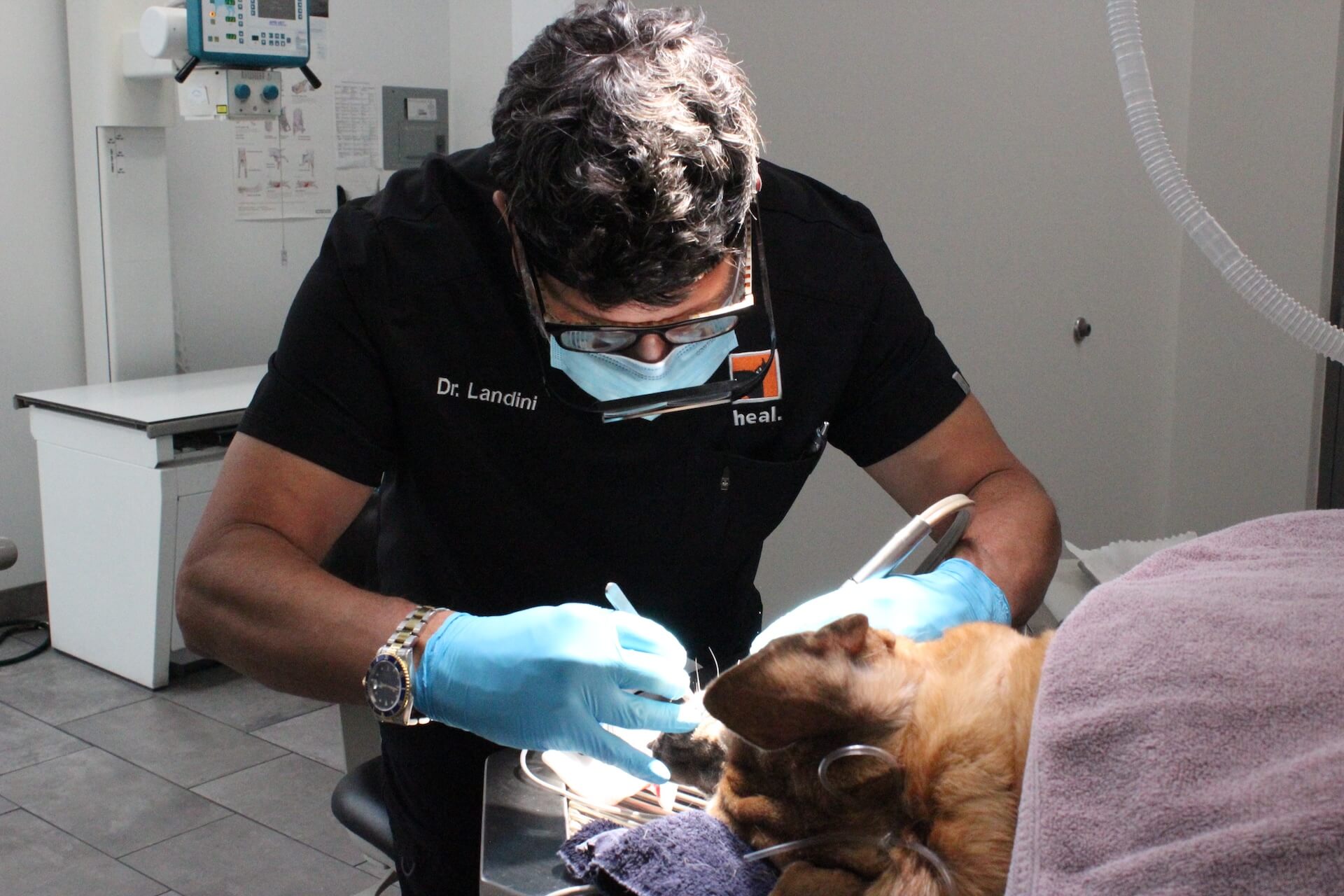Top Mistakes to Avoid Before, During, and After tplo surgery
All About Vet Surgery: Understanding the Significance of Expert Take Care Of Your Pet dogs
Vet surgical treatment is a vital part of family pet medical care. It encompasses numerous treatments, from routine elective surgical treatments to immediate interventions. Comprehending the intricacies of these surgical treatments can help pet dog owners make notified choices. The preparation, execution, and healing phases are essential for making certain the well-being of pets. With appropriate expertise, owners can navigate the intricacies of veterinary care. What variables should be thought about before a family pet goes through surgical treatment?
Kinds of Veterinarian Surgeries
When an animal requires medical intervention, recognizing the various kinds of vet surgeries can aid pet dog proprietors make informed choices. Vet surgical procedures can be generally categorized into three main kinds: elective, urgent, and emergency surgical procedures. Optional surgical procedures, such as spaying or neutering, are prepared procedures that are not immediately serious. Urgent surgical procedures, like those for international body elimination, need to be done soon yet are not dangerous in the moment. Emergency surgical procedures, such as those addressing extreme trauma or inner blood loss, are crucial and require immediate attention.Additionally, surgeries can vary in intricacy, varying from minimally intrusive laparoscopic treatments to more extensive open surgical treatments. Each type of surgical treatment carries its very own dangers and recovery processes. Recognizing these categories allows pet dog proprietors to participate in purposeful discussions with veterinarians, leading to far better end results for their cherished pet dogs.
Preparing for Your Family pet's Surgical procedure
Planning for a pet dog's surgical procedure includes a comprehensive checklist to guarantee all fundamentals are covered. Reliable interaction with the vet is crucial for recognizing the treatment and any necessary pre-operative steps - tplo surgery for dogs. Furthermore, having clear post-operative care instructions will assist proprietors provide the ideal assistance for their recuperating pets
Pre-Surgery List Fundamentals
Assuring a smooth medical experience for an animal requires careful preparation and interest to information. A pre-surgery checklist is important for pet dog proprietors to follow. Confirming the set up surgical procedure day and time is crucial. Owners ought to likewise confirm that their family pet has actually fasted according to the vet's guidelines, generally for 8-12 hours prior to surgery. Gathering required clinical records, including inoculation history, is vital for the veterinarian's evaluation. It is likewise recommended to prepare a comfy space in the house for the pet dog's recuperation after surgical procedure. Owners ought to have a strategy for transport to and from the veterinary center, making certain that the family pet is safe and comfortable throughout the journey. Adhering to these steps can substantially improve the medical experience.
Communicating With Your Veterinarian

Effective interaction with the veterinarian is crucial for a successful surgical experience for animals. Proprietors must be prepared to review their pet dog's clinical history, consisting of any type of pre-existing conditions, drugs, and allergic reactions. This information helps the vet examine dangers and customize the surgical plan appropriately. In addition, pet owners should ask questions regarding the procedure, anesthesia, and expected results to guarantee they totally comprehend the procedure. Clarifying any kind of uncertainties can alleviate anxiousness for both the animal and the proprietor. It is likewise vital to interact any behavioral modifications or problems observed in the family pet leading up to the surgical procedure. Eventually, clear dialogue promotes depend on and partnership, making sure that family pets obtain the very best possible treatment during their medical trip.
Post-Operative Care Instructions
After reviewing the procedure with the veterinarian, pet owners need to concentrate on post-operative care instructions to facilitate a smooth recuperation for their pet dogs. These directions commonly include keeping an eye on the surgical site for indications of infection, such as inflammation or discharge. Family pets may need to be kept one's cool and confined to stop too much motion that can interfere with healing. Discomfort monitoring is essential, so proprietors ought to follow the veterinarian's advice on administering medicines. Furthermore, dietary restrictions might be recommended to avoid stomach trouble. Normal follow-up visits are essential to assure proper recovery and deal with any type of concerns. By adhering to these post-operative treatment directions, pet dog proprietors can substantially add to their pet's recovery and total health.
The Surgery Explained
The surgery for pet dogs encompasses essential actions that guarantee their safety and security and recovery. Pre-surgery prep work are necessary for lessening threats, while post-operative care guidelines play an important duty in promoting recovery. Understanding these elements assists animal owners navigate the medical experience better.
Pre-Surgery Preparations
Before a family pet undergoes surgery, several vital prep work must take place to ensure a secure and effective treatment. A detailed veterinary evaluation is necessary to evaluate the pet's total health and determine any type of possible dangers. This may consist of blood tests, imaging, or various other diagnostics. The veterinarian will certainly likewise discuss anesthetic options customized to the pet dog's particular needs. Furthermore, family pet owners are typically instructed to hold back food and water for a defined time prior to surgery to lessen the threat of difficulties during anesthesia. It is essential for proprietors to provide a full medical background, consisting of any kind of medications or allergic reactions, ensuring the medical group has all essential information. Proper communication and adherence to pre-surgery guidelines can significantly boost the result of the procedure.
Post-Operative Care Standards
Appropriate post-operative care is important for making certain a pet dog's recovery adhering to surgical treatment. After the procedure, pets must be kept an eye on closely for any type of signs of complications, such as too much blood loss, swelling, or uncommon behavior. It is important to comply with the vet's instructions pertaining to medications, including painkiller and prescription antibiotics. Animals need to be maintained in a peaceful, comfy atmosphere to minimize stress and anxiety and advertise healing. Restricting activity is important; short, leashed strolls may be essential, yet jumping or running should be stayed clear of. Routine follow-up visits need to be arranged to evaluate the recovery process. Additionally, the medical website has to be maintained tidy and dry, with any indications of infection reported to a vet promptly. Adhering to these standards enhances recuperation end results.
Anesthetic and Discomfort Management
Effective anesthesia and discomfort management are crucial parts of vet surgical procedure, making sure that pet dogs stay comfy and safe throughout the procedure. Veterinarians analyze each animal's individual demands, considering elements such as age, weight, health and wellness status, and the type of surgical treatment being performed.Anesthesia methods typically include a mix of pre-anesthetic drugs, induction representatives, and inhalant anesthetics, more permitting exact control over the pet's level of consciousness. Surveillance during surgical procedure is crucial; vets constantly observe important signs to deal with any type of potential difficulties promptly.Pain administration techniques may include opioids, non-steroidal anti-inflammatory medications (NSAIDs), and anesthetics, customized to the animal's specific scenario. This multifaceted technique aids reduce pain and advertises a smoother medical experience. By prioritizing reliable anesthetic and pain monitoring, veterinary professionals enhance the overall welfare of pets going through surgeries, guaranteeing they get the highest possible standard of care.
Post-Operative Care and Healing
Adhering to surgery, the focus moves to post-operative care and recovery, which is vital for guaranteeing a family pet's secure go back to normal tasks. During this duration, pet dogs require a quiet, comfy setting to help recovery. Proprietors ought to carefully check their animals for any kind of signs of discomfort or unusual behavior.Veterinary standards commonly include certain instructions connected to drug management, injury care, and dietary changes. It is essential to abide by these recommendations to reduce difficulties and promote recovery. Pet dogs might need to be limited from strenuous tasks, such as running or leaping, throughout their recuperation period (emergency vet bellingham).Regular follow-up visits with the veterinarian enable monitoring of the pet's progression and timely modifications to the treatment plan. Giving psychological assistance and companionship can also improve a pet's recuperation experience, aiding to relieve tension and stress and anxiety. On the whole, thorough post-operative care plays a substantial role in attaining a ear cropping vets successful healing
Identifying Problems After Surgical Treatment
Exactly how can pet dog owners recognize difficulties after surgical treatment? Recognition of specific signs is important for guaranteeing the health of animals throughout recovery. Usual indicators consist of excessive swelling, soreness, or discharge at the surgical site, which might indicate infection. Furthermore, relentless discomfort, shown by whining or hesitation to relocate, should prompt instant attention. Changes in hunger or water intake can also suggest problems; a decline in these behaviors might signal pain or distress.Moreover, animal owners ought to monitor their pets for any kind of uncommon behavior, such as sleepiness or difficulty breathing, as these can be indicators of serious concerns. Throwing up or diarrhea following surgical procedure might call for urgent veterinary evaluation. Recognizing these difficulties early can substantially affect an animal's healing procedure, highlighting the significance of caution and punctual interaction with a vet for any type of worrying symptoms.
The Function of Vet Specialists in Surgical Treatment
Veterinary professionals play a crucial duty in ensuring the security and success of surgeries for animals, specifically complying with surgery when monitoring and care are critical. These specialists include veterinarians, veterinary technicians, and assistance team, every one of whom contribute specialized abilities to the medical process.Before surgical procedure, vets conduct detailed assessments to evaluate the family pet's wellness, ensuring that any hidden problems are taken care of. Throughout the treatment, the surgical team supplies anesthetic, keeps sterile environments, and keeps track of key indications, Homepage very important for decreasing risks.Post-operative treatment is equally considerable; vet specialists observe for problems, handle pain, and overview proprietors on recuperation methods. Their competence allows them to identify very early indicators of distress or infection, ensuring prompt treatment. Ultimately, the collective initiatives of veterinary specialists in medical treatment promote a safe environment, promoting the well-being of pets throughout the surgical trip.

Frequently Asked Inquiries
How Do I Choose the Right Vet Specialist for My Pet?
Picking the ideal veterinary surgeon includes researching credentials, reviewing reviews, and examining the center's environment. It is important to review the surgeon's experience with details treatments and their communication style when making a choice.
What Prevail Misconceptions Concerning Vet Surgeries?
Common mistaken beliefs about veterinarian surgeries include beliefs that they are constantly risky, unneeded, or for emergency situations. Numerous pet owners undervalue the benefits of preventative treatments and the ability included in veterinary surgical treatment.
Exactly How Much Will My Pet's Surgical procedure Cost?
The cost of a pet dog's surgery can vary significantly based on aspects such as the sort of treatment, the vet's experience, and geographic area (emergency vet bellingham). Normally, expenditures vary from a few hundred to a number of thousand dollars

Can My Family Pet Eat Before Surgical Treatment?
Prior to surgical treatment, it is typically recommended that pet dogs avoid consuming for a particular duration. This fasting helps minimize the danger of problems throughout anesthesia. Owners ought to consult their veterinarian for exact directions customized to their pet's needs.
Suppose My Pet Dog Has Pre-Existing Health And Wellness Issues?
When a family pet has pre-existing health and wellness problems, it's crucial for the vet to examine these aspects prior to surgery. This assessment guarantees ideal precautions are taken, reducing dangers and optimizing the family pet's general security throughout the treatment.